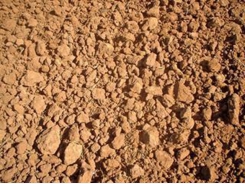Fungi and bacteria: the balancing act

Healthy ‘living’ soil can contain up to 15t/ha of bacteria, actinomycetes, protozoa, algae, fungi, nematodes, earthworms and arthropods.
Legume green manure crops like this vetch will decompose far more rapidly than fibrous material such as maize residue.
Each group, and each species within each group, has different functions, and scientists are still trying to understand these and the huge number of interactions that take place.
A single teaspoon of soil may contain up to six billion microbes of 30 000 species. The number of organisms and thus their ratio to one another change constantly as soil conditions change. The relative populations are closely associated with the organic status of the soil, the climate and soil management. Tilled soil tends to have more bacteria, while untilled soil has more fungi.
Bacteria prefer simpler carbon compounds as food, whereas fungi can digest the cellulose and lignin found in hard stalks and mature crop residue. Fungi are more efficient at humus formation, which is just one reason why no-till increases the humus content of the soil.
Active and passive states
The organic matter in soil is in one of two states – active or passive. The passive portion, which usually comprises about two-thirds, is slow to build up and slow to be broken down by soil organisms. The active portion consists of decomposing organic matter.
Tillage damages or destroys the microscopic fungal fibres, reducing fungus numbers. At the same time, it introduces more oxygen, causing bacteria numbers to rise. The spike in bacteria numbers leads to rapid breakdown of the active portion, releasing large quantities of carbon dioxide into the atmosphere.
If organic content is included in the tillage procedure, the bacteria rapidly increase as they are now being fed as well. The reaction will depend on the material incorporated, whether dry crop residue, green manure or manure. Cattle manure provides the most benefit from an increase in humus, as the carbon/ nitrogen ratio is 30:1. On the other hand, green manure provides carbon in an easy digestible form and causes bacteria numbers to spike.
Although this will improve the soil condition through the sticky deposits left by the bacteria, the benefits are not that long-lasting. Adding extra nitrogen can also cause bacteria to build up. In doing so, the bacteria uses stored carbon for energy, leading to a loss of humus. However, if the incorporated organic matter has too little nitrogen (as discussed in a previous article), less humus will be formed.
To manage soils effectively and economically, we must understand the interactions and consequences of soil treatment.
Climate and soil types
The warmer the climate and the sandier the soil, the quicker the soil is degraded by soil organisms. Under these conditions, the humus content stabilises at a lower level for the same annual organic input. Well-aerated soils are partially equivalent to cultivated soils, aside from the fact that tillage also destroys fungi.
It is clear that the soil micro-organisms increase or decrease according to the food source and weather conditions. Adding micro-organisms through compost tea will have only a limited effect on existing populations. Scientists have established that adapted native species in the soil usually attack foreign bacteria. However, using compost tea as an inoculum in fumigated soils or together with nitrogen speeds up the breakdown of organic crop residues.
Culturing organisms
As each species of soil organism has a different function, scientists have taken to culturing certain organisms to perform specific functions. These include controlling plant parasitic nematodes, increasing the nitrogen content of the soil, making certain minerals available and controlling disease-causing organisms.
Có thể bạn quan tâm
Phần mềm

Phối trộn thức ăn chăn nuôi

Pha dung dịch thủy canh

Định mức cho tôm ăn

Phối trộn phân bón NPK

Xác định tỷ lệ tôm sống

Chuyển đổi đơn vị phân bón

Xác định công suất sục khí

Chuyển đổi đơn vị tôm

Tính diện tích nhà kính

Tính thể tích ao hồ




 The value of bacteria
The value of bacteria  Humus – learn to appreciate it
Humus – learn to appreciate it